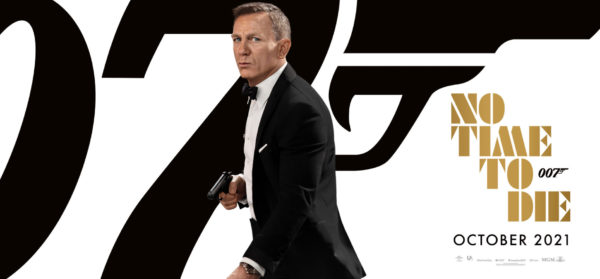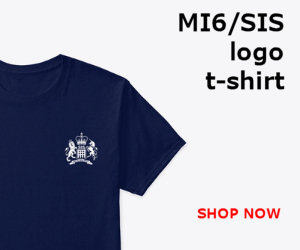Special Agent Jof Gurd’s spoiler-free review of the new Bond film.

Note from editor: we make every effort to avoid spoilers. However, if you really want to know nothing of the film then don’t read this (or any other) review until you have seen it.
So, after 15 years, this is the end of the Daniel Craig James Bond project, characterised by a deliberate effort to make films which are more cinematically ambitious than their predecessors and explore 007’s psychology in the way that, while largely absent from previous movies, is a core part of Ian Fleming’s novels.
Taken on these terms, No Time To Die is a triumphant farewell. What director Cary Joji Fukunaga and cinematographer Linus Sandgren have made looks and feels nothing like any other Bond film, being both totally modern and highly classical at the same time. No shaky-cam here, but plenty of inventive shots and deep visual storytelling scattered with knowing references to moments and images culled from the entire history of Bond on page and screen, without indulging in slavish recreation. Fukunaga’s classicism extends to letting fight scenes play out in wide shots, letting the action breathe without having to rely on choppy editing to make the blows land. Make no mistake, No Time To Die is the best-looking and best-directed Bond film to date.
All this is, of course, anchored upon Daniel Craig, totally at ease in his portrayal of Bond as a wounded animal trying to fix his armoured heart, but one now less weary of the world which has softened some of his sharp edges. He’s aided in this by a script in which characters have actual extended dialogue scenes rather than throwing quips past one another, and these allow it to explore its themes to a refreshing depth. On one hand there’s the ever-present tension between Bond’s latent desire to live a normal life and his sense of duty, on the other the Craig era’s central question of whether trust can ever be regained after betrayal, but No Time To Die throws in a third, deeper question of the morality and dangers of high-tech asymmetric combat.
This isn’t to say there’s no humour, but it’s used more to put a button on a scene, or emerges from the script deliberately confounding the audience’s expectations or just toying with them: at least one long-running fan theory receives a definitive answer in the course of a running gag that later reveals itself as a key moment of character development. That toying doesn’t extend to the plot: at heart No Time To Die is a straightforward Bond movie, albeit one seen from a different angle.
Much of that is the angle of its peripheral characters, often to the extent of crowding Bond out of the picture altogether. They conduct their own conversations and operations as the story sets up three separate entwined plot strands in which any of the characters might just as easily be on either side, before Bond slowly unravels them in a display of real spycraft that plays out in the evolution of his relationship with new agent Nomi, played with a breezy mixture of no-nonsense pride, efficiency and respect by Lashana Lynch.
Not every character gets or needs so much time. Paloma, played by Ana de Armas, appears for maybe a dozen of the film’s 163 minutes, but arrives with so much energy that she delightfully walks away with one of the film’s major action sequences having made an impact that vastly outweighs that slender screentime. Not that it’s rushed either, and at no time does the film feel like it’s dragging or flabby.
A Bond movie might be expected to pack out a hefty running time with action, but there’s a distinct sense that the film is more interested in the story. That said, every action scene feels integral to the story and doesn’t shy away from brutality as it showcases Bond’s ability to improvise in the field, use military tactics, or just pummel bad guys in an echo of the knock-down, drag-out brawling style established in Casino Royale. Furthermore, Bond is still not dependent on Q’s gadgets but isn’t afraid to put them to use, particularly in what is the goriest moment seen in a Bond film since Licence To Kill.
No Time To Die is much more interested in the dramatic and emotional scenes that play out between Madeleine Swann (the returning Léa Seydoux), Bond and Safin, played by Rami Malek. Sadly Safin is the most underwritten character of the film and his motivations fail to jibe with Malek’s very deliberate and restrained performance: in assembling a character intended to be an abstracted embodiment of Bond’s innermost fears and drives, the writers didn’t manage to give him a personality of his own. But then, it’s not his film: it’s Madeleine Swann’s.
Seydoux absolutely shines here, not least because No Time To Die gives her so much more to do than did SPECTRE. The script seems perfectly tailored to her acting style and neatly uses French dialogue to reinforce Swann’s bond with another character. As the woman who has coaxed the humanity out of the blunt instrument, Seydoux carries all the weight of film’s most emotional moments, most powerfully as Bond resolves those fundamental conflicts of his character and reveals the true depth of his capacity for love. The resolution is entirely in character for this Bond, even for Fleming’s Bond, and opens up a host of fascinating directions for the actor who replaces Daniel Craig when James Bond returns. It’s bold but it’s going to be, at best, divisive.
Which brings to mind the previous holder of the title of Longest Bond Movie: On Her Majesty’s Secret Service, which similarly explored Bond’s ability to love, arrived at a transitional point for the franchise and received mixed responses, but with time has come to be acknowledged as one of the franchise’s finest entries.
Time will be kind to No Time To Die.
Jof Gurd was formerly the Bond correspondent for Birth.Movies.Death and can be found on Twitter at @tweetbyjof.
What did you think of No Time to Die?
Leave a comment and let us know.









